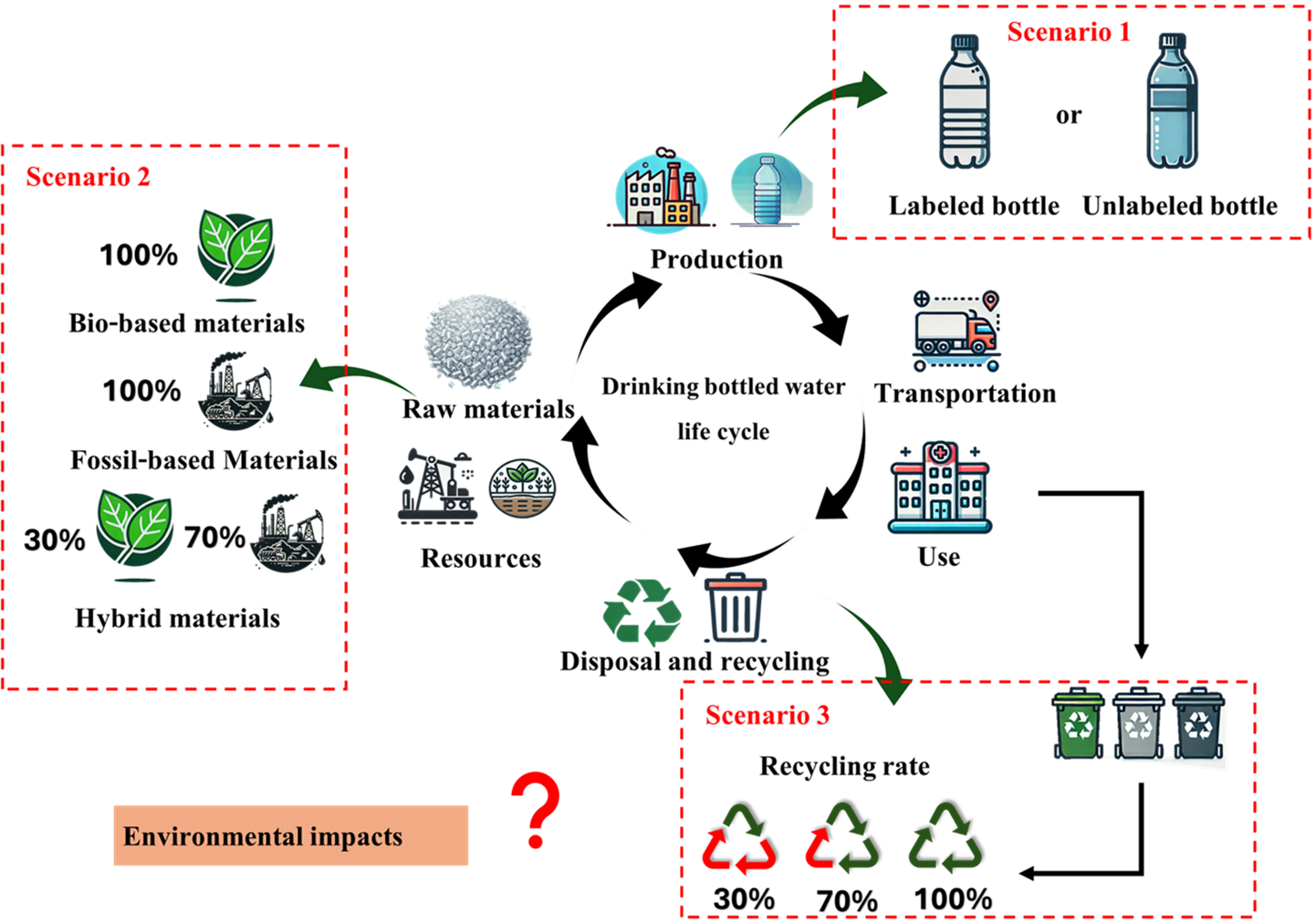Life Cycle Comparative Assessment of Polyethylene Terephthalate (PET) Plastic Bottles: A Case Study of Drinking Bottled Water in Ramathibodi Hospital, Thailand
Main Article Content
Abstract
In the current context where all sectors aim to promote sustainable development, hospitals, as large organizations with significant human interactions, face challenges in managing not only medical waste but also general waste such as water bottles. Improper management of these wastes can lead to environmental problems and high disposal costs. This study performed a life cycle assessment (LCA) of regular (petroleum-based) and alternative (bio-based) polyethylene terephthalate (PET) bottles used in Ramathibodi Hospital, Thailand, to identify effective strategies for mitigating environmental impacts. The assessment was divided into three scenarios: label-free bottles, bio-based bottles, and 100% recycling. The results indicate that using label-free bottles instead of conventional ones merely reduces environmental impacts by 2%. Transitioning to 30% and 100% bio-based PET can decrease greenhouse gas (GHG) emissions by 7 and 13 tons of CO2 eq per year, respectively. Currently, the hospital's PET bottles contribute 56.2 tons of CO2 eq annually. Health impacts associated with conventional PET bottles amount to 11.70 disability-adjusted life years (DALYs), a comprehensive measure that includes both mortality and morbidity. Meanwhile, 30% and 100% bio-based bottles reduce this to 7.35 and 4.87 DALYs, respectively. Achieving 100% recyclability in bottle management can cut GHG emissions from disposal processes by up to 90%. Moreover, combining the use of 100% bio-based PET bottles with 100% recycling can lower GHG emissions by up to 40% compared to current practices. These findings highlight the potential for significant environmental and health benefits through improved bottled water management strategies in hospitals.
Article Details

This work is licensed under a Creative Commons Attribution-NonCommercial 4.0 International License.
Published articles are under the copyright of the Applied Environmental Research effective when the article is accepted for publication thus granting Applied Environmental Research all rights for the work so that both parties may be protected from the consequences of unauthorized use. Partially or totally publication of an article elsewhere is possible only after the consent from the editors.

